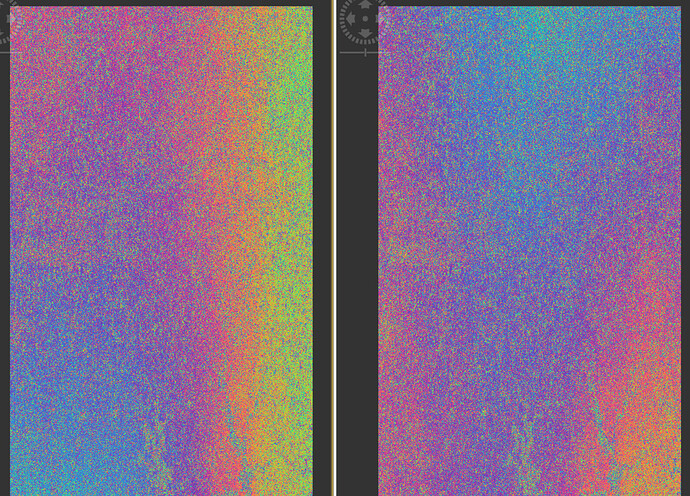these operators are applied on backscatter intensity while interferometric methods work with the phase information. So calibration and filtering is not necessary (or useful) here.
OK great!  Thank you!
Thank you!
I created 2 interferograms, based on the same pair as always.
They look like this:
Left: Polynomial Degree 5, Orbit Degree 4
Right: Polynomial Degree 6, Orbit Degree 5
Do you think they still suffer from ionospheric affects?
-Are they “good enough” to continue processing?
Based on your experience that is
I really can’t tell from looking at them, sorry.
At least they do not contain these regular stripes any more.
sure! ok, I will proceed and hope for the best! 
A funny thing happened,
The SNAPHU plug-in, though it can run a full scene when the ifg is derived from products that are radiometrically calibrated, it produces memory errors when the original products are not radio/y calibrated.
Any insights?
Would it be erroneous to generate ifgs from products that are radiometrically calibrated?
-considering that you entioned: “these operators are applied on backscatter intensity while interferometric methods work with the phase information. So calibration and filtering is not necessary (or useful) here.”
you can’t retrieve inteferograms from Sigma0, so I probably don’t get the point here
Complex calibration would make only sense to me for polarimetric analyses…
yes, you are right. certainly I meant complex r. calibration.
I can’t think of a reason why it fails without complex calibration, but in the end, it will not harm your analysis if you keep it in the workflow
initially i thought it would be that the calibrated product occupied less space, but a simple check-sum revealed that both different versions of the product have the same data in MB. So, i have no idea why this happens
at least the unwrapping does not fail 
